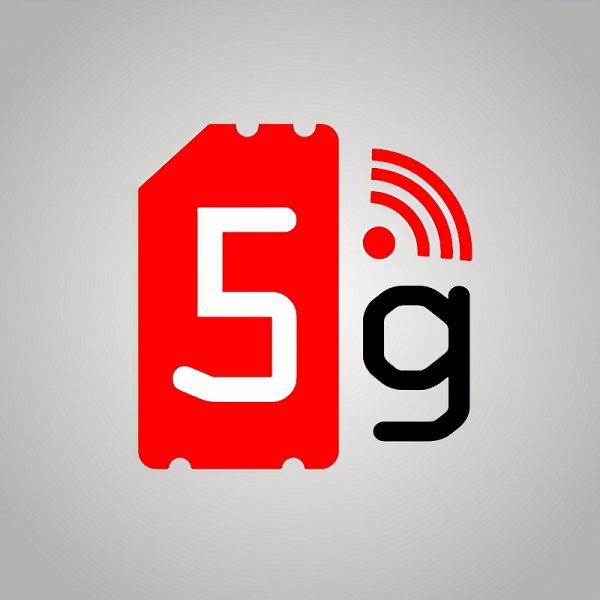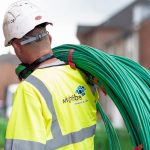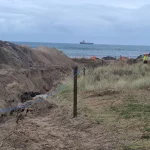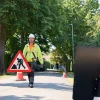Ofcom Publish Final Results of UK 5G Mobile Auction for 26GHz and 40GHz

The UK telecoms regulator, Ofcom, has this morning revealed the final (assignment stage) results of last week’s auction of the 26GHz and 40GHz millimetre wave (mmW) spectrum bands for use by 5G mobile broadband operators, which sets out precisely which frequencies within each band will be allocated to EE, O2 and VodafoneThree (Vodafone and Three UK).
Just to recap. The three mobile operators won a combined 800MHz of spectrum frequency in the 26GHz band and 1GHz of spectrum frequency in the 40GHz band – each paying £13m for this spectrum. The total revenue raised from the Principal stage were £39m, which has gone to HM Treasury. But a final assignment stage was needed in order to decide precisely which parts of each band would go to whom.
Following completion of the assignment stage, Ofcom has now granted licences to the three bidders for the following frequencies across the two bands. This means the auction is now fully complete, and the winners are free to deploy the spectrum in accordance with the conditions of their licences:
Advertisement
- EE – 26.7-27.5 GHz and 41.5-42.5 GHz
- O2 – 25.1-25.9 GHz and 40.5-41.5 GHz
- VodafoneThree – 25.9-26.7 GHz and 42.5-43.5 GHz
At present, most mobile operators already have access to several 5G capable bands between 700MHz and 3.8GHz. Such frequencies reflect the same sort of low and mid-band radio spectrum that the mobile operators have been using since the advent of the first 3G and 4G data networks. But 26GHz (25.1-27.5GHz) and 40GHz (40.5-43.5GHz) are intended to complement that by providing lots of additional spectrum, which means more data capacity for extremely fast speeds (e.g. multi-Gigabit).
However, such high frequency mobile signals tend to be very weak and can’t cover a wider area without a much denser and thus more expensive network, which in practice means they’ll primarily be used for serving busy urban areas (shopping malls, airports etc. – “High Density Areas“) and fixed wireless broadband (FWA) links. Ofcom has thus made the spectrum available with 15-year licences across 68 “high-density” areas (i.e. cities and select transport hubs).
The catch is that it will take time for the network operators to fully harness the new bands, not least because many modern devices (Smartphones, routers etc.) and radio kit don’t yet fully support them. We suspect there will be some event and location specific deployments in the near future, although a wider roll-out may only become feasible once support improves.
Mark is a professional technology writer, IT consultant and computer engineer from Dorset (England), he also founded ISPreview in 1999 and enjoys analysing the latest telecoms and broadband developments. Find me on X (Twitter), Mastodon, Facebook, BlueSky, Threads.net and Linkedin.
« Internal Auditors Seek Greater UK Telecoms Role via New Security Code
Advertisement
Leave a Reply Cancel reply
Privacy Notice: Please note that news comments are anonymous, which means that we do NOT require you to enter any real personal details to post a message and display names can be almost anything you like (provided they do not contain offensive language or impersonate a real person�s legal name). By clicking to submit a post you agree to storing your entries for comment content, display name, IP and email in our database, for as long as the post remains live.
Only the submitted name and comment will be displayed in public, while the rest will be kept private (we will never share this outside of ISPreview, regardless of whether the data is real or fake). This comment system uses submitted IP, email and website address data to spot abuse and spammers. All data is transferred via an encrypted (https secure) session.























































Exciting to see… Apart from UK phones not having the antenna, though I know this is years away anyway. Hopefully in the future the Europe phones will just be the US phones
Considering the attenuation at such high frequencies, they will try to use it for broadband in highly dense areas, where people already have 2–3 fiber optic ISPs to choose from. On the top of that, add their inability to cover the whole country without govt financing.
At 26GHz and 40GHz I can also see the Flat Earthers and the Tin Hat brigade getting their voices and selves seen and heard by saying the tech is poisoning something inate and obscure? If the Government wants Gigabit and above in rural areas it’ll be wise to stick to fiber, RF I isn’t cut out for the terrain, even here in Rhondda Cynon Taf, 800MHz is the frequency mostly used with 2100MHz dotted about! I do hope now 3G is all but gone, that 4G and 5G get the attention at lower bands to improve the conversation here in RCT for example.
..
The licence only allows them to deploy this in high density areas approved by Ofcom, so independently of financing, no one’s going to cover the whole country with them (neither does it make sense). This is for stadiums, squares, airports, etc, where lower bands already struggle. It’s not to cover large areas.